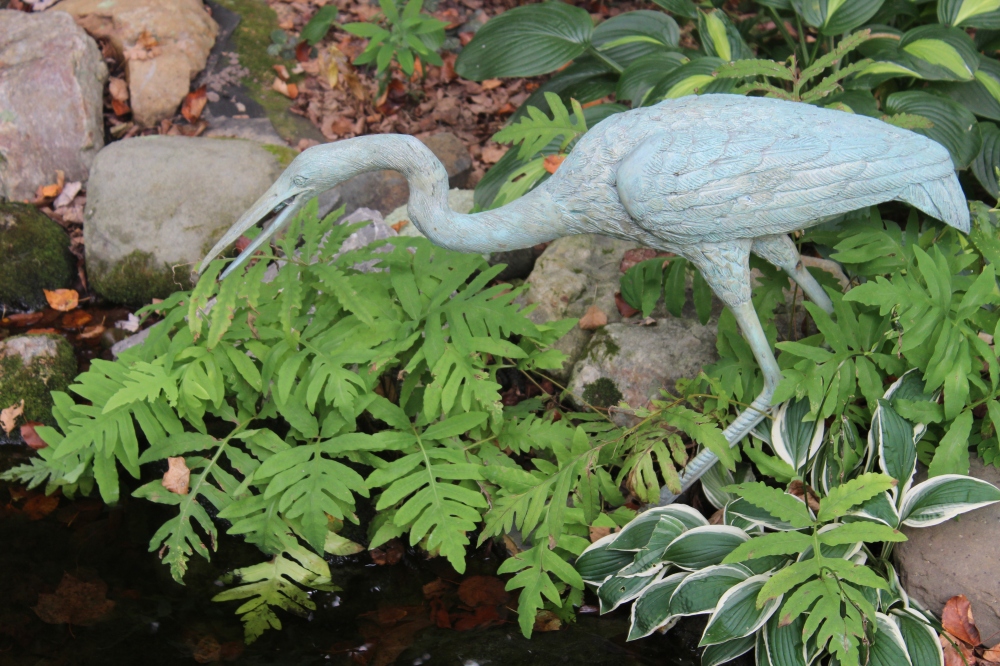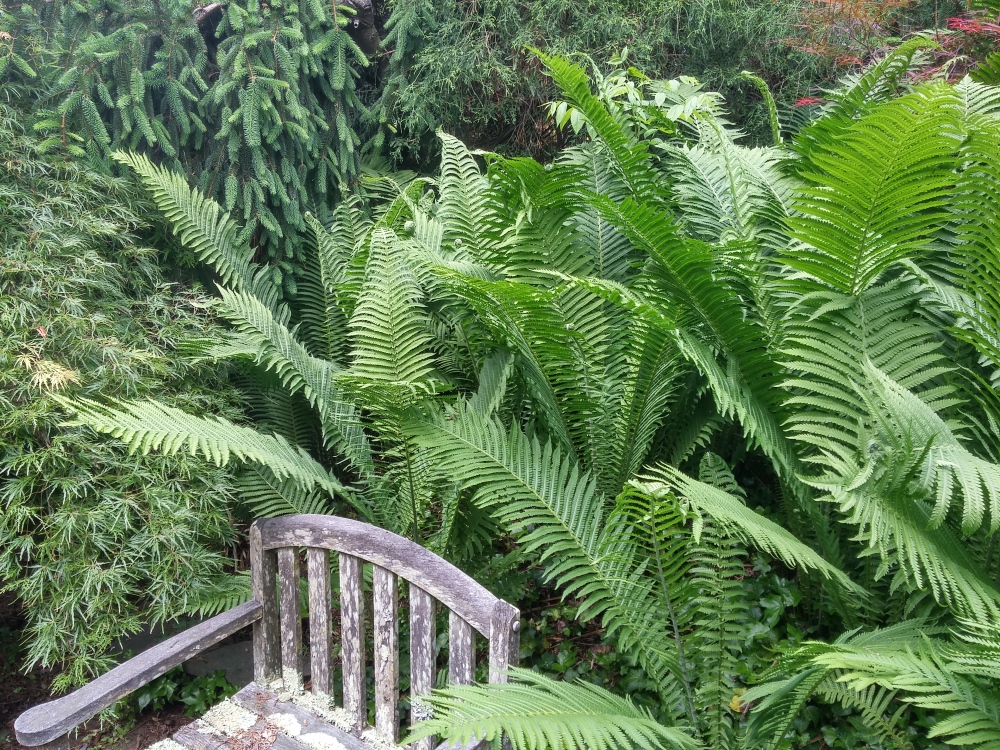While I would not for a moment describe it as invasive, or even aggressive, sporelings (baby ferns) of Japanese Painted fern (Athyrium niponicum var. ‘Pictum’, below) are common in the garden. These often pop up in odd places, though always in shade. Along the narrow, constructed stream that flows between two of the garden’s ponds, sporelings grow on moss covered stones with no soil. How long these survive, through winter freezes, and with few roots to anchor against stiff breezes, will be of interest. Other Painted ferns sporelings are well placed in soil, and often in a protected spot beneath a shrub or taller perennial so that they are hardly visible until they grow on for a year or two.
Sporelings of the native Sensitive fern (Onoclea sensibilis, below) are most common in the garden, but this fern is very touchy about dry soil, and often it disappears as quickly as it starts. A few small stands of Sensitive fern have caught on, but these are in very damp soil, and everywhere else it doesn’t appear they’ll amount to anything.
In a damp area where I’m planning for a fern to spread to cover ground so I can stop weeding, I’ve transplanted a few Hay Scented ferns that were divided, and it’s likely I’ll plant a few more. This spot has proved too sunny for Sensitive fern, but Hay Scented has survived worse circumstances. I plant with a degree of caution since this fern will spread quickly in the right conditions, and this area should be just right, but spreading too far, too quickly is of little concern for this spot.
In a spring fed damp area twenty feet into the forest understory, Ostrich ferns (Matteuccia struthiopteris, above) have spread, but a few transplants to a drier area of the garden have spread to densely cover a hundred square foot area. Probably, they would have spread farther, but a patio and walk, and the dense shade of a large spruce limit growth in each direction. This does not stop Ostrich fern from growing through cracks between flagstones, which sounds worse than it is since the rhizomes are easily snapped off. In a sunnier and drier spot, Ostrich fern has spread, though more slowly, and in no way would I describe the growth of any of the ferns to be aggressive or difficult to manage.
The gardener must choose which fern suits his situation, a clumping fern such as Japanese Painted, or one of the spreading ferns. Though many ferns are adaptable over a range of conditions, the gardener is advised to research to pick the fern best suited to the sun or shade and soil dampness of the area. Sporelings in odd places are a bonus.
Great tips on the ferns…Take care, Laura